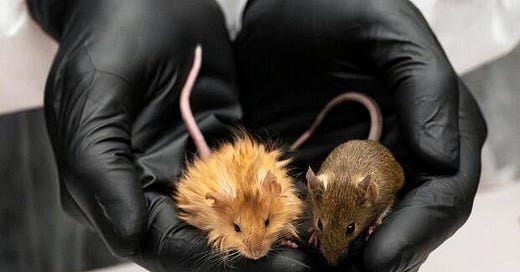I am not going to tell you how to bet on the winner of this weekend's "Wait Wait Don't Tell Me" -- it was taped Thursday, so I have insider knowledge -- but I will tell you this:
There were no questions about woolly mice.
Can you imagine that?
It was a legitimate story of the week. Scientists determined to restore the woolly mammoth . . .
Is restore the right word? It doesn't seem strong enough. Would you say "restoring liberal democracy"?
Reviving is another word that has been used in the media. Would you say “reviving liberal democracy”?
The scientists involved in the intent to bring back the woolly mammoth is de-extinction. I want to like that. But the verb, to de-extinct, fails to trip off the tongue. "You know the woolly mammoth, right?" the scientists involved must be saying over cocktails with people they want to impress. "We're going to de-extinct it."
Really?
If I may make a suggestion to scientists, in general: Try to use nouns that can be brought back to catchier verbs. Verbs that make people say, "Really?" in a positively wondering tone.
The mice, though, have the ring, for what it is worth, of truth.
Reportedly, the scientists (and the mice) in question are employed by a genetic-engineering company called Colossal Biosciences. Headquartered "in Texas."
In a more confident age, Colossal Biosciences would surely have called themselves Texas Biosciences, or Lone Star Biosciences, and assumed that people would take for granted the colossal-ness. But I dare say researchers these days, even in a red state, need all the bluster they can claim. Hey, federal funding.
At any rate, I believe that Colossal Biosciences is a credible genetic-engineering company — because the stories about the woolly mice are illustrated by actual photographs. (See below.)
Sure, you can fake anything these days. But by that token, you could just go ahead and fake woolly mammoths. Woolly mice are a modest enough development to be considered true.
And as far as I am concerned, woolly mice are enough. I don't know how they go over with their non-woolly peers, but for me, reading the news for the purpose of being able to answer likely questions on NPR's "Wait, Wait, Don't Tell Me," the mice hit the spot.
And yet, no questions.
Maybe too scary. The very prospect — bodied forth by woolly mice — of woolly mammoths. Maybe we aren’t ready to have woolly mammoths among us again, after they've been extinct for, roughly (according to "AI Overview") ten thousand years. At least one scientist quoted in the news (there must be a course you can take in graduate school these days that prepares you for being a quoted scientist), says: "I don't know what the downside of having a bunch of hairy Asian elephants stomping around in the tundra might be."
The tundra? How about the zoos? Zoo animals do sometimes escape, right? How about a mammoth stomping around in your neighborhood?
At any rate the mice are, in the word of one of the quoted scientists, "adorable." Here, with a non-woolly mouse for contrast:
Can we, who wish to de-extinct liberal democracy, ever be this adorable again?
I say, "again."
The woolly mouse doesn’t look happier than the non-woolly mouse, does it?




It's "resurrecting" liberal democracy.